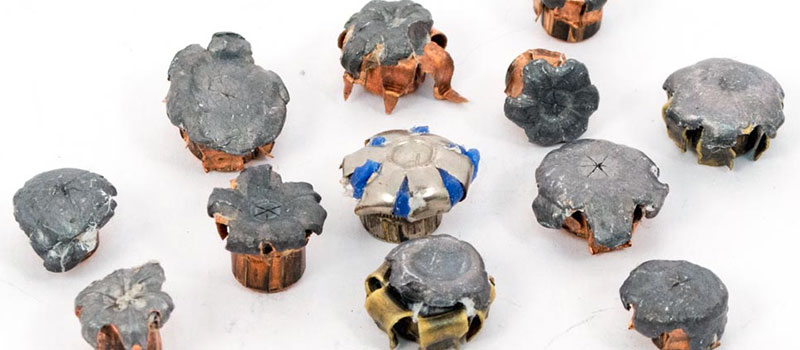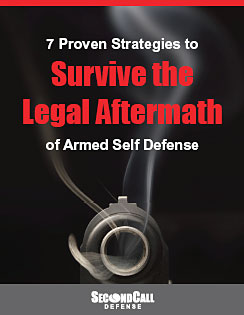How to Choose Your Defensive Ammunition
by Keith Coniglio
Even the most cursory review of gun-related websites will illustrate how much research and effort concealed carriers put into their selection of firearms, holsters, and belts. “The best” might not exist, but that doesn’t stop us from trying to find it, just in case.
Unfortunately – and ironically – there doesn’t appear to be quite as much passion surrounding something even more important to defensive use: our ammunition. Our guns may do the work of launching bullets, but it’s the projectiles themselves that do the work of saving lives, and we shouldn’t rely on marketing glossies as the ultimate authority on what to carry. But to research what works best, we need to know what “works” really means.
Defensive ammunition has unique requirements. Like any ammunition, it should offer accuracy. However, unlike target ammunition, it must also offer absolute reliability in your specific firearm, and it must be destructive enough to the human body to prevent a continued attack from someone already intent on causing you harm or death.
To achieve this level of incapacitation, defensive bullets must be able to penetrate deeply (the current FBI standard is between 12″ and 18″ in a 10% ballistic gelatin block), something achievable only with sufficient mass and velocity. The projectile itself must also cause sufficient bleeding, nerve damage, damage to muscle tissue, and/or structural damage to supporting bone to stop an attacker. This is generally accomplished by projectile expansion crushing a wider path of tissue, or bullet jacketing designed to peel away and cut.
Now that we know how such rounds work, let’s talk about all the ways they can fail – and why you should spend the time and effort to research and test on your own.
As said above, penetration is dependent upon mass and velocity – this is physics, not magic – and velocity is affected greatly by barrel length. While manufacturers are unlikely to make fraudulent performance claims, it doesn’t mean their data is universal – find out the documented length of the test barrel. A bullet that performs admirably out of a 5″ test barrel may not achieve adequate velocity for penetration and expansion out of your carry gun’s 3″ barrel, especially if it must pass through a limb and/or layers of clothing first. Don’t rely on marketing alone!
There are numerous sites where real-world chronograph data is posted. Odds are good you will find your barrel length, if not your
specific gun, represented.
Reliability is paramount when we’re talking about a defensive scenario, but this is not only a matter of ammunition quality control. Otherwise reliable ammunition in an otherwise reliable pistol may still result in feed issues due to overall cartridge length or the design of a hollow point’s cavity (this is especially true of older pistols, designed when ball ammunition was the testing standard). There is no hard and fast rule as to how many failure-free rounds is “enough” – a web search returns a range from 100 to 1,000 rounds, depending on personal preferences – but it should inspire confidence that any potential gremlins have been identified. It may be difficult to throw away the money on boxes of expensive ammunition, but you must know that you can depend upon the ammunition in your specific carry arm. Budget the funds to test to your satisfaction, and remember that your life may depend on your commitment to that testing.
Hollow point cavities may not only cause feed issues, they may simply not work. While there are many different designs, hollow points generally expand due to the pressure of soft tissue and bodily fluids against the interior walls of the cavity, creating a “mushroom” effect. Clothing material, especially denim, can clog that cavity, effectively turning your bullet into a solid, non-expanding projectile, increasing the odds of over penetration and posing a danger to innocent parties downrange. Conversely, bullets slow down as they expand, reducing penetration. If such penetration was marginal at the outset, you may deliver a wide but shallow wound that fails to take the fight out of your assailant.
When researching options, beware of making assumptions based on brand name. If a reputable manufacturer produces a perfectly performing 9mm +P round, it does not guarantee that their standard pressure 9mm, or an offering in another caliber, will deliver the needed penetration and expansion. Look for data, not by manufacturer, but by published performance measurements in the specific caliber and configuration you plan to carry.
A final caution: beware of biases masquerading as “common knowledge.” Whether due to physical limitations or the need for deep concealment, many concealed carriers choose a pocket pistol chambered in .380ACP, .32ACP, or even less. “Common knowledge” has led to generations of shooters being advised to use only fully-jacket rounds in such calibers to ensure adequate penetration. It’s always good to hear of penetration being stressed, but technology and bullet design have improved greatly since this advice was first offered. There may be – in the case of the .380, there are – offerings in these sub-calibers that can still deliver the necessary penetration and expansion. Trust – but verify. Research for yourself what promising options may be available
Knowing how something works is the first step to knowing what works best for you. Remember that there is literally no magic bullet, be mindful of the limitations and factors that can affect defensive ammunition performance, and test, test, test to ensure your firearm and ammunition choices are compatible.
Keith Coniglio is a father, software tester, NRA-certified pistol instructor, and devoted Second Amendment advocate. He is also the editor-in-chief of Descendants of Liberty Press, a site dedicated to rekindling Americans’ passion for – and defense of – their Constitutional rights and personal liberty.


